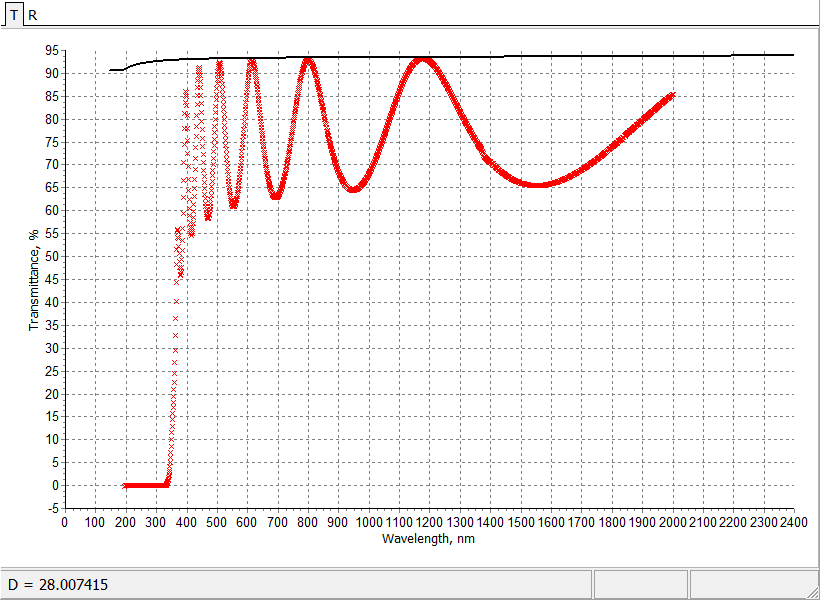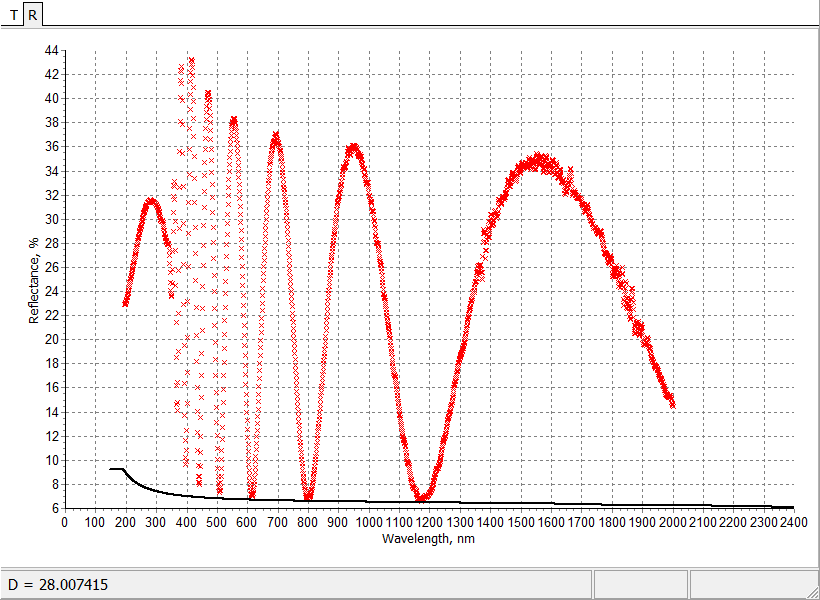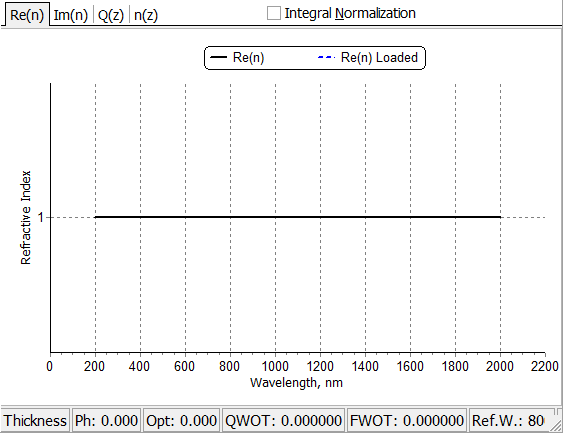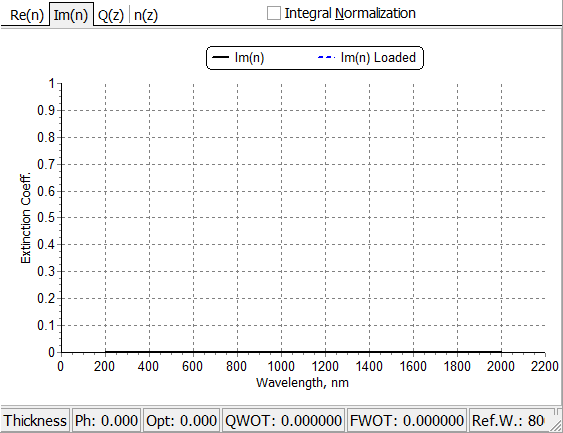| Unique \(n(\lambda)-k(\lambda)\) characterization option assumes arbitrary but smooth dependence of refractive index and extinction coefficient on wavelength. These models should be used in most complicated cases. For example, when it is required to characterize thin films in wide spectral range and simple models (Cauchy, Sellmeier) are not suitable. Below we show fittings of experimental \(R/T\) data by model data and evolution of n-k wavelength dependencies. The data are related to TiO2 thin film on Suprasil substrate.
More complicated example can be found here. Further details and mathematical formulas can be found in our publications. |
|
 |
 |
 |
 |
See more in our publications:
|
|
Look our video examples at YouTube
OptiLayer videos are available here:
Overview of Design/Analysis options of OptiLayer and overview of Characterization/Reverse Engineering options.
The videos were presented at the joint Agilent/OptiLayer webinar.